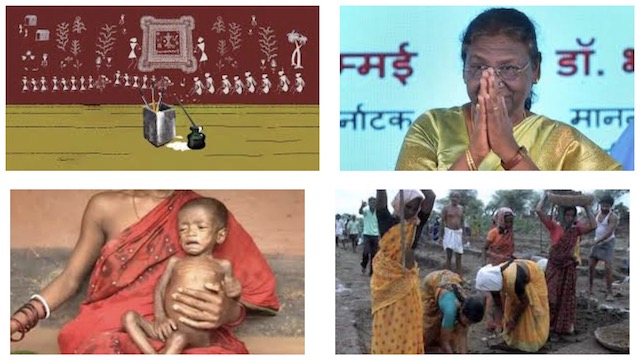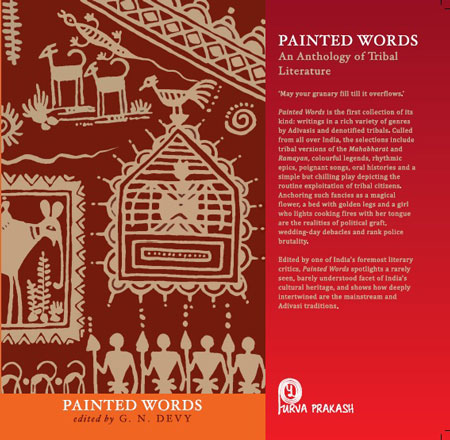MOHAMMED IQBAL, The Hindu, JAIPUR, February 4, 2012
An ambitious project sponsored by the National Bank for Agriculture and Rural Development (NABARD) in 15 villages of the tribal-dominated Anandpuri block in Banswara district of Rajasthan has strengthened the rural livelihood scenario by successfully connecting missing links of resource management in agriculture, forestry, animal husbandry, pasture, medicinal products and fruits.
The “Wadi” project, named after a system for land-based production in local parlance, has especially promoted agro-horticulture and agro-forestry, thereby enhancing the socio-economic status of the resource-poor families, and has so far helped about 500 households in improving their livelihoods and crossing the poverty line. […]
Mr. Joshi says Vaagdhara had laid emphasis on providing an important role to women in decision-making and involved them in a big way in economic activities and non-traditional roles. Besides, the village communities have been organised in a three-tier set-up so as to sustain efforts for production enhancement and equitable benefits.
The project is all set to reduce input costs in agriculture and animal husbandry systems on the one hand and enhance production on the other in the years to come. Support in the shape of Wadi would strengthen the economy of primary production in the remote and hilly terrains. […]
While tribal communities in the region earlier had a forest resource based livelihood, large-scale deforestation forced them to shift to farming activities on a sloping land and caused degradation. Continued and damaging run-off resulted in the loss of agricultural land along the stream course and led to an adverse effect on the ground water conditions in the district.
According to Mr. Joshi, NABARD had extended financial help to Vaagdhara for enhancing skills, improving resources and building new institutions in the field of land-based production mainly through resource development and management. “Recycling of nutrients is an [added] advantage of the project,” he says.
On its conclusion, the project is expected to make the target tribal households “drought-proof” with better nutritional resources and increase per hectare unit yield of different crops. With the livelihood available locally, production efficiency is set to improve and linkages for sustainable development strengthened.
Source: The Hindu : Today’s Paper / NATIONAL : Rural bank doing wonders for poor tribal households
Address : http://www.thehindu.com/todays-paper/tp-national/article2859132.ece
Date Visited: Tue Mar 27 2012 09:43:19 GMT+0200 (CEST)

linked to each other.” – Droupadi Murmu | Speeches by the 15th President of India >>
Images © publishers, artists & photographers featured by Google Safe Search
Learn more about water-related issues that affect India’s tribal communities >>
“Together, we must endeavour to strengthen tribal communities which are the role model in preservation of water, forest and land, and learn from their connection with nature and the surrounding environment for the sake of the entire human race.” – journalist and tribal rights activist Dayamani Barla in The Wire >>
“It was assumed that tribal people have same health problems, similar needs and hence the uniform national pattern of rural health care would be applicable to them as well, albeit with some alteration in population: provider ratio. The different terrain and environment in which they live, different social systems, different culture and hence different health care needs were not addressed.” – Abhay Bang in Report of the Expert Committee on Tribal Health >>
Tips for using interactive maps
Toggle to normal view (from reader view) should the interactive map not be displayed by your tablet, smartphone or pc browser
For details and hyperlinks click on the rectangular button (left on the map’s header)
Scroll and click on one of the markers for information of special interest
Explore India’s tribal cultural heritage with the help of another interactive map >>
See also
Adverse inclusion | Casteism | Rural poverty
Demographic Status of Scheduled Tribe Population of India (Census figures 2011)
Fact checking | Figures, census and other statistics
Human Rights Commission (posts) | www.nhrc.nic.in (Government of India)
Search tips | Names of tribal communities, regions and states of India
“What is the Forest Rights Act about?” – Campaign for Survival and Dignity
“Who are Scheduled Tribes?” – Government of India (National Commission for Scheduled Tribes, NCST)

Tribal Literature by G.N. Devy >>
Free eBooks & Magazine: Adivasi literature and languages >>
“India, a union of states, is a Sovereign, Secular, Democratic Republic with a Parliamentary system of Government. The President is the constitutional head of Executive of the Union. In the states, the Governor, as the representative of the President, is the head of Executive. The system of government in states closely resembles that of the Union. There are 28 states and 8 Union territories in the country. Union Territories are administered by the President through an Administrator appointed by him/her. From the largest to the smallest, each State/UT of India has a unique demography, history and culture, dress, festivals, language etc. This section introduces you to the various States/UTs in the Country and urges you to explore their magnificent uniqueness…” – KnowIndia (Government), States and Union Territories (Visited: 2 September 2023)
Learn more about India’s 28 States and 8 Union Territories – From Andhra Pradesh to West Bengal | Nutrition >>